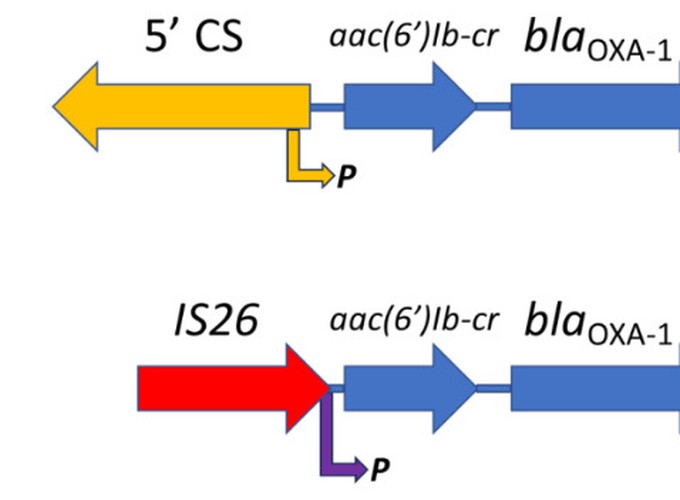 Image credit: Punyawee Dulyayangkul
Image credit: Punyawee Dulyayangkul
 Image credit: Punyawee Dulyayangkul
Image credit: Punyawee Dulyayangkul
Amikacin and piperacillin/tazobactam are frequent antibiotic choices to treat bloodstream infection, which is commonly fatal and most often caused by bacteria from the family Enterobacterales. Here we show that two gene cassettes located side-by-side in and ancestral integron similar to In37 have been “harvested” by insertion sequence IS26 as a transposon that is already globally disseminated among the Enterobacterales. This transposon encodes the enzymes AAC(6’)-Ib-cr and OXA-1, reported, respectively, as amikacin and piperacillin/tazobactam resistance mechanisms. However, by studying bloodstream infection isolates from 769 patients from three hospitals serving a population of 1.5 million people in South West England, we show that increased enzyme production due to mutation in an IS26/In37-derived hybrid promoter or, more commonly, transposon copy number amplification is required to simultaneously remove these two key therapeutic options; in many cases leaving only the last-resort antibiotic, meropenem. These findings may help improve the accuracy of predicting piperacillin/tazobactam treatment failure, allowing stratification of patients to receive meropenem or piperacillin/tazobactam, which may improve outcome and slow the emergence of meropenem resistance.